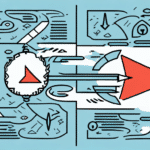Understanding the Benefits of Customer Retention Analysis
Customer retention is a critical aspect of any business strategy, focusing on the ability to keep existing customers over time. Unlike customer acquisition, which often incurs higher costs, maintaining a loyal customer base can lead to sustained profitability and growth. This article delves into the advantages of customer retention analysis and its role in enhancing business performance.
Why Customer Retention is Crucial for Business Growth
Focusing on customer retention is not only cost-effective but also pivotal for long-term success. Studies indicate that increasing customer retention by just 5% can boost profits by up to 95% (Forbes). Loyal customers tend to:
- Spend more over time
- Refer new customers
- Provide valuable feedback
Moreover, a strong retention rate enhances brand reputation. Satisfied customers are more likely to recommend your business, increasing brand awareness and establishing a positive industry presence.
Building a Strong Brand Reputation
A loyal customer base contributes significantly to a brand's reputation. Positive experiences lead to word-of-mouth referrals, while negative experiences can damage the brand. Therefore, maintaining high customer satisfaction is essential.
Opportunities for Upselling and Cross-Selling
Understanding customer preferences allows businesses to offer additional products or services that meet their needs. This not only increases revenue but also strengthens the customer-business relationship.
The Importance of Analyzing Customer Retention
Analyzing customer retention involves examining various data points to understand customer behavior and loyalty drivers. Effective analysis helps identify patterns, predict future behaviors, and implement strategies to enhance retention rates.
Key Data Points for Retention Analysis
- Purchase history
- Customer feedback
- Engagement metrics
For instance, identifying that customers engaging on social media are more likely to return can guide investments in those channels.
Improving Your Bottom Line through Retention Analysis
Retention analysis provides insights into which strategies are effective, enabling businesses to allocate resources efficiently. For example, a loyalty program might prove more effective than discounting products, leading to higher retention rates and increased profitability.
Reducing Customer Churn
By identifying the causes of customer churn, businesses can implement measures to address these issues, reducing the costs associated with acquiring new customers.
Maximizing Customer Lifetime Value (CLV)
Understanding CLV helps businesses focus on high-value customers, tailoring strategies to enhance their loyalty and increase their long-term value.
Essential Metrics for Effective Customer Retention Analysis
Tracking and analyzing key metrics is vital for understanding and improving customer retention. Some of the most important metrics include:
- Customer Lifetime Value (CLV): The projected revenue a customer will generate during their relationship with the business.
- Purchase Frequency: How often customers make purchases.
- Customer Engagement: Interactions such as website visits, email opens, and social media activity.
Regularly reviewing these metrics helps identify trends and adjust strategies accordingly.
Measuring Customer Satisfaction and Loyalty
Customer satisfaction is often gauged through surveys and feedback forms, while loyalty can be measured by repeat purchases and referrals. High satisfaction and loyalty levels indicate effective retention strategies.
Leveraging Data Analytics to Combat Customer Churn
Data analytics plays a crucial role in identifying and addressing the factors that lead to customer churn. By analyzing purchase history and feedback, businesses can pinpoint at-risk customers and implement targeted retention efforts.
Proactive Retention Strategies
Offering personalized discounts or tailored communications can help retain customers before they decide to leave.
The Role of Personalization in Customer Retention
Personalization enhances customer experiences by tailoring interactions and offers to individual preferences. This approach fosters a stronger emotional connection, leading to increased loyalty.
Personalized Marketing Efforts
Using customer data to customize email campaigns and promotional offers can significantly improve engagement and retention rates.
Best Practices for Implementing Customer Retention Analysis
Successful customer retention analysis requires a structured approach:
- Identify and track relevant metrics.
- Set clear retention goals and benchmarks.
- Develop and test targeted retention strategies.
- Regularly review and adjust strategies based on feedback and results.
Establishing Clear Goals
Defining specific objectives, such as achieving a particular retention rate, provides direction and measurable targets for the analysis.
Emerging Trends and Technologies in Customer Retention
The landscape of customer retention is continually evolving with advancements in technology:
- Artificial Intelligence and Machine Learning: These technologies enhance predictive analytics, allowing businesses to anticipate customer behavior and implement proactive retention measures.
- Personalized Communication: Increasing emphasis on one-to-one interactions strengthens customer relationships.
- Social Media Engagement: Leveraging social platforms for authentic and personalized customer interactions.
Adopting Predictive Analytics
Predictive analytics enables businesses to identify high-risk customers and implement interventions to retain them effectively.
Conclusion: Prioritizing Customer Retention Analysis for Business Success
Customer retention analysis is indispensable for building a sustainable and profitable business. By understanding and implementing effective retention strategies, businesses can foster a loyal customer base, enhance their brand reputation, and drive long-term growth. Investing in retention analysis is a strategic move that ensures continued success in a competitive marketplace.




















